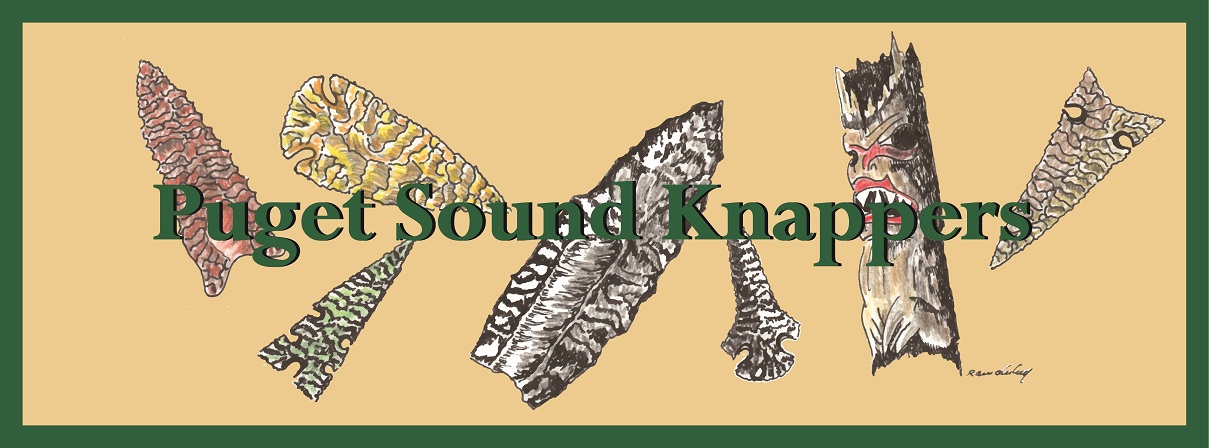 |
 |
|
Pine Tree (see “Pine Tree Corner Notched” following this initial discussion)*NOTE: There are sharp differences of opinion on how the Pine Tree point should be typed. Some sources recognize two separate point types, others do not. Art Gumbus, Lithics-Net, sees these as two distinctly different types. He defines a “Pine Tree” point as one which is side-notched, regardless of basal configuration (flat, concave, bifurcated, etc.) and the “Pine Tree Corner Notched” as one which is corner-notched, again regardless of basal characteristics. Another school of thought defines all lobed/bifurcated Pine Trees as “Pine Tree” thereby lumping side-notched and corner-notched into a single form if any tendency to auricular bases is perceived. Justice (Stone Age Spear and Arrow Points of the Midcontinental and Eastern United States; Indiana Univ. Press, 1995) on the other hand uses the terms “Pine Tree” and “Pine Tree Corner Notched” interchangeably. The purpose of this database is not to champion any particular view but simply to provide users with the best information to which I have access at the time. However, given a tendency in modern archaeology to move away from some of the fracturing of point types into variant categories, I’ve decided to choose Justice’s approach. Readers may disagree and if so are quite welcome to split this point type into the two types they feel are correct.- MS Pine Tree Corner Notched Also See: Big Sandy, Greenbrier, Kirk, Palmer, Pine Tree Location: Southeastern United StatesAssociated Dates: 8000-5000 Y.B.P. >General Description: The Pine Tree Corner Notched dart point is a small to medium sized corner notched type that is usually serrated along the blade edges and has parallel flaking to the center of the blade. The base on this point is usually ground and can be concave, convex, straight, bifurcated or auriculate (with ears). The shoulders expand and are usually barbed. It is suggested that the Pine Tree point evolved from the earlier Greenbrier type. Small examples of Pine Tree points are often classified as Palmer points. Pine Tree points in pristine state can be wide and as resharpening took place the point became less broad and more rapier looking or pointed in shape. >The average size of the Pine Tree Corner Notch point is between 40 mm and 58 mm in length, between 42 mm and 26 mm wide across the barbs, 6 mm to 9 mm thick with a stem 10 mm to 12 mm long and 22 mm to 39 mm wide across the stem ears. The point was named by James W. Cambron for examples which were recovered from the Pine Tree site in Limestone County, Alabama.
ABOVE:: PTCN01: Pine Tree Corner Notched point; see description below About the Point Above: The extremely large and wide Pine Tree Corner Notched point [above] is from the former Johnnie Woodard collection and was found near the town of Dickson, Dickson County, Tennessee. The point is made from tannish grayish, almost khaki colored chert with very little gloss. It has a large circular lighter tan flint nodule inclusion in the very center of the blade which is quite unusual and aesthetically pleasing. The edges of this blade are recurved and are not serrated. The round nodule of flint provided the knapper a unique challenge and has dictated an unusual knapping style as its properties are different than the chert material. The basal edge of the nodule sticks up higher on the face of the blade than the surrounding blade material. Overall, the point measures 89 mm in length, is 44.5 mm wide across the barbs, and is only 9 mm thick in mid blade at the high point of the flint nodule but averages 6.5 mm in thickness along the median ridge. The stem is 11 mm long and the ears of the stem are 34 mm wide. The corner notches are 9 mm long. The base is ground as are the ears and corner notches. The stem thickness, including the ears is 5.5 mm. Hypothetically, this point may represents a near original condition or pristine Pine Tree Corner Notched point in an unreworked state. (TEXT SOURCE: Art Gumbus, Lithics-Net Additional General Description: Justice (Stone Age Spear and Arrow Points of the Midcontinental and Eastern United States; Indiana Univ. Press, 1995) describes the Pine Tree Corner Notched point as “essentially a resharpening variant of Kirk Corner Notched” but adds that, “However, the thin cross section and highly refined and variable blade morphology are distinctive….Many reworked Kirk blades tend toward shortening of the overall length but Pine Tree points exhibit blade length maintenance and greater width reduction.” PINE TREE CORNER NOTCHED POINT THUMBNAIL GALLERY (386 images: 193 source images/193 thumbnails)
|
|
©2010 J Keffer |